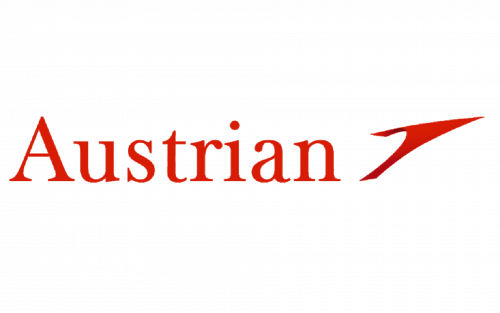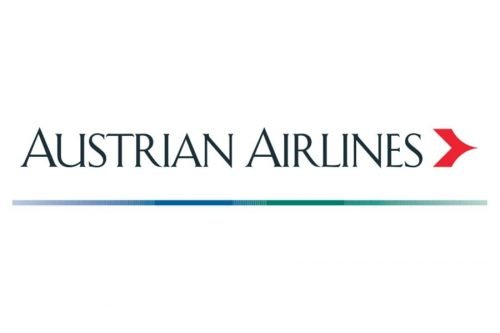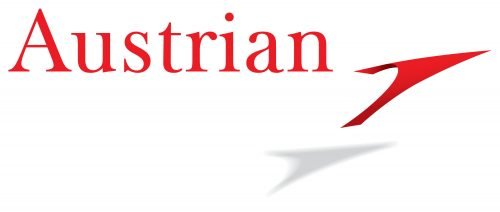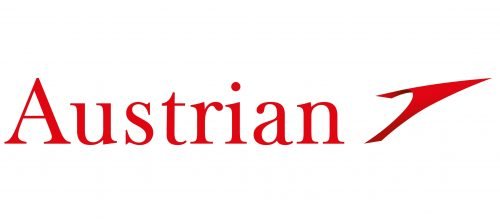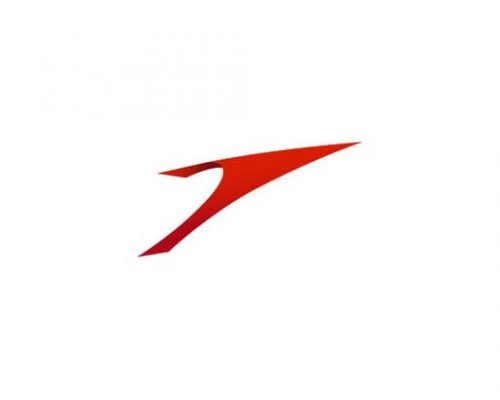Austrian Airlines AG, the flag carrier of Austria, has had at least four logo updates over its more than 60-year history.
Meaning and history
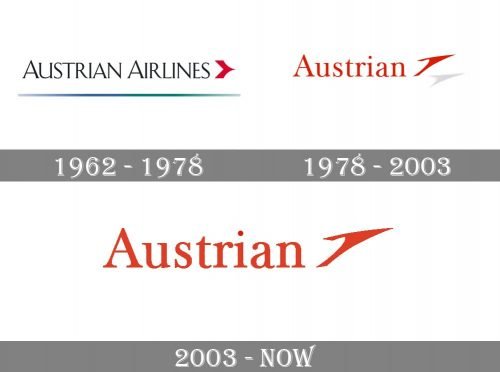
Austrian Airlines was formed in 1957 by the merger of the two airlines, Austrian Airways and Air Austria. Scheduled domestic flights start in May 1963 and since 1969, after the Vienna-New York flight, Austrian Airlines has had a new era — transatlantic flights. The airline is united in the Austrian Airlines Group, together with its partners — Austrian Arrows, responsible for scheduled flights, Lauda Air, the comoany from the charter sector, and exotic destinations field, and Austrian, responsible for the regional activity. This makes it the largest and most diversified company in Europe and the world.
On the fuselages of the company’s airliners there is a main logo, a stylized red arrow on a white background, symbolizing the airplane taking off into the sky, executed in the the color scheme of the Austrian flag.
What is Austrian Airlines?
Austrian Airlines is the name of Austria’s largest airline and one of the oldest air carriers in Europe. Austrian Airlines was founded in 1957, its home airport is Vienna-Schwechat. It is a member of Star Alliance and has a fleet of 82 Airbus, Boeing, Bombardier and Embraer aircraft. The company has four stars in the Skytrax rating.
1995
The older Austrian Airlines logo combined the name of the company with a stylized plane and a horizontal bar.
The words “Austrian Airlines” in black featured a light type with unusual sharp serifs. The shape of the glyphs in a way echoed the stylized red aircraft (arrow) seen to the right. The horizontal bar combined blue and green gradient apparently symbolizing the sky and the ocean.
2003
Landor Associates, a US-based design consultancy, developed a brighter and simpler design. The red of the aircraft became the dominant color. The full name of the company was replaced by the word “Austrian.” This time, all the glyphs were lowercased, except for the initial. The type was a simpler one, although it was still elegant and had serifs.
The aircraft adopted a slightly more realistic look, although it was still more of a symbol than a depiction of a real aircraft. The designers introduced a shade of the aircraft in gray below the emblem. This added a lot of depth to the image.
2018
Once again, the Austrian Airlines logo has grown simpler and better legible. The type has become bolder. The difference in the width of the strokes is less obvious than in the previous version. The aircraft has gone higher and lost its shade.
According to the brand, the alterations were aimed at making the logo easier to use across a variety of digital media. Also, the company wanted to make the logo better visible from far away (and succeeded in this).
Company overview
The company was formed in 1957 as a result of the merger of Air Austria and Austrian Airways. The airline’s roots can be traced as far back as to 1923, though.
Boasting the fleet size of over 80 units, it flies to 130 destinations and employs around seven thousand employees. It is a subsidiary of the Lufthansa Group.
Font and color
The elegant and traditional Austrian Airlines logotype is executed in a title case of a classy and sleek serif typeface, which is very close to such fonts as Baskerville LT Cyrillic Cyrillic Upright and Song ASC Traditional Medium. The lines of the letters are smooth and elegant and the slightly pointed and shortened serifs add some playfulness to a professional and timeless look.
Like almost all major air carriers, Austrian Airlines uses the color palette of its country’s national flag for its visual identity. The red and white color palette of the logo makes the company look powerful and passionate, evoking a sense of energy and dynamics, along with a progressive approach to providing its customers with super comfortable and technological services.


